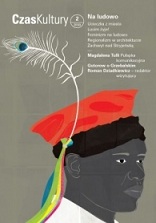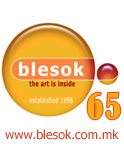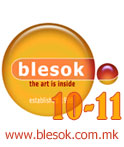
We kindly inform you that, as long as the subject affiliation of our 300.000+ articles is in progress, you might get unsufficient or no results on your third level or second level search. In this case, please broaden your search criteria.


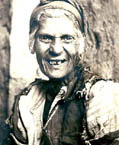
Presents the cycle of virtues in the Lutheran Black Church in the transylvanian city of Brasov (Kronstadt) as an artistic product of its time and proves the reference of the emblems to the Lutheran intellectual sphere of the city. The ten emblems, which were painted after the model of south German etchings (Augsburg) of the incipient 18th century, deviate though to some extent from these. The iconographic but particularly the textual deviations of the local artist turn out to be a reflection of Lutheran ideas, both religious and political, regarding the events of the day in the city of Kronstadt in the first decades of the 18th century. Contains five images.
More...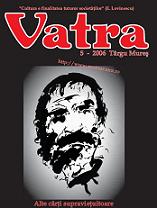
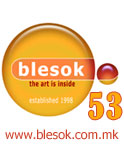



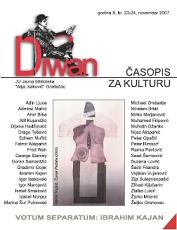
Essayistic review of the unusual artistic world of Nesim Tahirović (exhibition in the City Gallery in Bihać from the 24th May to 17th June 2007) presents new contents of artist’s authentic expression, both on the level of the used materials and the artistic performance, and the semantics of his artistic expression. The works of Nesim Tahirović attract by their authenticity, “multilinguality” and contemporary nature.
More...
Review of graphic art of Admir Mujkić, its basic artistic and semantic contents and layers (Exhibition in the Centre for Culture and Education in Tešanj, 11th May 2007). This author is known for small-format graphics, which are a kind of curiosity in contemporary artistic practices. Mujkić’s miniatures, despite their dimensions, are characterized by richness and universality of meaning.
More...
Vizualizirajući svijet u kojem se zatekao, čovjek u nivou nesvjesnog, dakle, osobnog arhetipa, nužno srasta s određenim prizorima i slikama koje ga u etnološkom, kulturalnom i antropološkom smislu bitno oblikuju i nerijetko mu postaju poputbina za cijeli životni vijek, pa i bitne za njegovo djelo. Dio bh. arhetipa su crteži i slike krajolika stare Bosne, koje su nam u nasljedstvo (kao i prve fotografije!) najčešće ostavljali stranci: austrougarski oficiri, arhitekti, geometri i fotografi koji su u BiH došli iz bijelog svijeta. Nije bila rijetkost, da fotograf slikajući uljanim bojama preko fotografije – postane slikar. Tako su često, kao više ili manje uspjele dobivene realističke slike bosanskih krajolika, naselja, prizora izgradnje putova, pruga, tunela, narodnih običaja, starih nošnji, arhitekture, pa i izvršenja smrtnih kazni.
More...
Crteži i slike Nedžada Ibrišimovića na sasvim jednak način u plošnom nivou i izduženoj projekciji vizualiziraju svijet, kao što to njegova skulptura čini u neposrednom odnosu prema ljudskoj figuri u prostornom smislu. Isto možemo razaznati u njegovome književnom tekstu, kada je riječ je o njegovim književnim likovima i načinu pripovijedanja. Na crtežu ili u skulpturi /ako nije riječ o portretima konkretnih osoba kod kojih istrajava u refleksu karakterne crte/, nerijetko prepoznajemo istu izduženost i oštrinu, skoro, pa možemo vidjeti likove iz njegovoga književnog djela, ali i životnog okruženja, pojedinačno ili grupno.
More...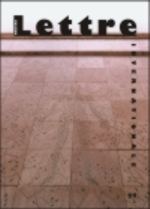
Works of intellectual creation, whether they belong to the category of those protected by copyright law (literary, artistic or scientific works), whether they belong to the industrial applicability creations (inventions, innovations, utility models, designs and patterns, topographies of semiconductor products, etc.), are, without exception, the product of the human intellectual activity. In other words, they are exclusively created by the individual or the individuals. It is a consequence of the fact that only the human being enjoys the intellectual and volitional capacity, the ability to consciously direct its activity and inactivity in relation to interests animating him. On the other hand, only the human individual possesses intelligence, rationality, talent, vocation, artistic skills required in the act of creation. By way of consequence, only the human being, including the minor child, the person under judicial disability or the lunatic may hold authorship of an intellectual creation and, therefore, they may acquire rights and obligations arising from the act of creation. Secondly, it should be noted that the laws protecting intellectual creations, both in the sphere of copyright and in the industrial property one make no distinction as to individuals human creators of intellectual works in terms of their legal capacity. In other words, the authorship of such creations can acquire even the minor child, although he/she does not have full or restricted legal capacity.
More...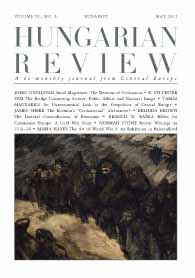
Arts and Artists in World War I: the title alone of the exhibition, held at the Vaszary Villa in the town of Balatonfüred between October 2014 and January 2015, was intended to convey the scope and variety of the works on display in terms of genre, underlying motivation, and even of aesthetic standards. Paintings, scale models of memorials, memorial medals, tablets, works on paper, photographs and posters all shared space here, if not directly back to back, but scattered across a number of exhibition rooms loosely communicating with one another inside the same building.
More...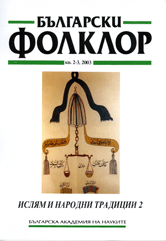
The article examines the problem of the specific interrelation space - time in Islamic art. In plastic arts, where time is absent as a form-generating factor, space is expressed in a two-dimension interpretation of the forms, in conscious rejection of depth and perspective. This means rejection of the third dimension, which is so common for the eyes of the European; a dimension, which gives volume and adapts the work of art to its real spatial environment. In Islamic art the very notion of plasticity is not connected to modeling the volume, which presupposes three-dimensional characteristics. It is rather connected to the artistic transformation of the flat surface - facade, wall paneling, cover or page of a book, canvas of a picture or carpet. The two-dimensional structuring corresponds to the abstract, mathematical way of spatial thinking, which is typical of the Arabs and which finds a bright expression in the wide application of Geometry in various spheres of artistic creation.
More...